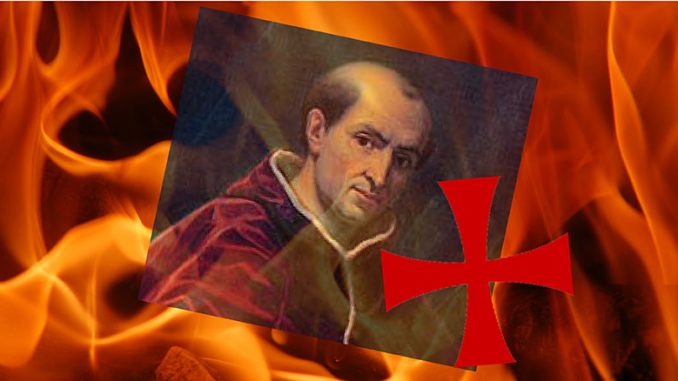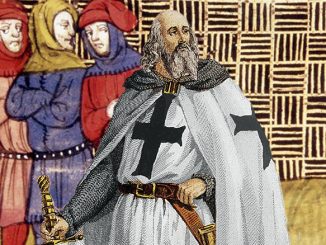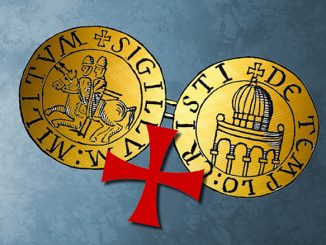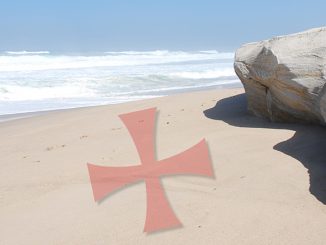
Pope Clement V was born Bertrand de Got in 1264 CE at Villandraut in Gascony. He was crowned as Pope in Lyons, about a year after the death of Pope Benedict. De Got was a friend of King Philip of France, but at the same time had been a strong supporter of Pope Boniface VIII, who was an enemy of Philip’s. The King of France had publicly burned Boniface’s Papal Bull, Unam Sanctum which gave the Pope absolute power over everything.
Clement settled in Avignon France in 1309. Until this time all Popes had resided in Rome. Avignon would be the home of the Popes until 1378, with but one brief exception. This period at Avignon is often referred to as the “Avignon Captivity.” Seated in Avignon, Clement and the other Avignon Popes would keep their hands on the controls of Rome through the use of Vicars.
Many historians believe that Clement V was a weak and subservient Pope. Clement was afraid of the manipulative French King Phillip and this fact is seen through his dutifully following Philip’s every whim. Philip Le Bel, who as mentioned earlier, was an enemy of Pope Boniface VIII, so deeply hatred the man that he tried to have him posthumously branded as a heretic. It is interesting to note that Philip had a hand in Pope Boniface’s death. Clement actually began to start a proceeding to do as Le Bel wished but stalled long enough for Phillip to change his mind on the matter. This was not the last time that Phillip would use Clement to brand a group as heretics as in 1307 the pair would orchestrate the arrest of the Knights Templar.
Clement V And The Downfall Of The Knights Templar
After the final collapse of Outremer in 1291, the Templars had lost some clout and a great deal of face. There is no doubt that the fortune and power amassed since their humble beginnings two centuries earlier, had made many monarchs and citizens jealous. It was this jealousy, combined with greed and a nearly bankrupt nation, that prompted Phillip to make his move on October 13th, 1307 – arresting all the Templars in France. Under the inquisitor’s torture methods, all sorts of confessions were extracted. Clement using these confessions to his own ends was able to suppress the order of the Templars in 1312. What follows are the Papal Bulls that crushed the Knights Templar.
Pope Clement’s Papal Bulls Involving The Knights Templar
Vox in Excelso: The bull that actually suppressed the order
Ad Providam: Is the follow up bull that passed what little assets remained over to the rival Hospitallers order
Considerantes: Papal Bull given May 6 1312
Nuper In Concilio: Papal Bull given May 16 1312
1 DEC 1312: Papal Bull given at the Council of Vienne
Licet Dudum: Papal Bull given at the Council of Vienne December 18th 1312
31 DEC 1312: Papal Bull given at the Council of Vienne
Licet Pridem: Papal Bull given at the Council of Vienne – January 13th 1313
The Death Of Pope Clement V
Jacques de Molay, the last Grand Master of the Knights Templar, while about to burn to death as a relapsed heretic, allegedly issued a curse to both Phillip IV and Clement V. The curse was that both men would meet him in heaven within a year to face God for their wrongful accusations. Whether this curse was actually spoken or not, will perhaps always remain a mystery. The fact is that both Phillip IV and Clement V did die within a year of de Molay. Clement V (Bernard de Got) died on April 20th, 1314.
About Us
TemplarHistory.com was started in the fall of 1997 by Stephen Dafoe, a Canadian author who has written several books on the Templars and related subjects.
Read more from our Templar History Archives – Templar History



